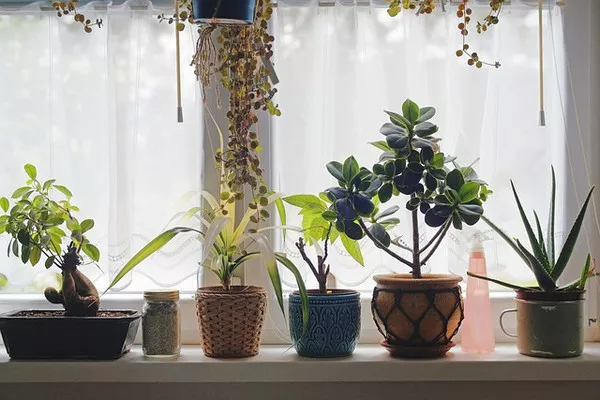Plants, the silent inhabitants of our world, often evoke a sense of permanence with their rooted existence. While many plants appear to be perennial fixtures of the landscape, their lifespans can vary significantly, with some living only a few months, while others endure for centuries. The question of how long plants can live is a fascinating subject that delves into the complexities of biology, environment, and adaptation. In this article, we will explore the remarkable lifespans of plants, shedding light on the factors that influence their longevity.
Short-Lived Plants: The Annuals
To begin our journey into the world of plant lifespans, let’s start with the shortest-lived group: annual plants. Annuals complete their entire life cycle within a single year. They typically sprout from a seed, grow, produce flowers and seeds, and then die—all within a single growing season. Common examples of annual plants include many garden vegetables like tomatoes, cucumbers, and sunflowers.
The short lifespan of annuals is an evolutionary adaptation that allows them to capitalize on favorable growing conditions and reproduce quickly. By producing a large number of seeds in a short time frame, annuals ensure the survival of their species, even if individual plants do not endure for long.
Perennials: A Longer Life Cycle
Perennial plants, on the other hand, live for multiple years and can endure for a decade or more. These plants invest more energy in growth and maintenance because they have a longer life expectancy. Some perennials, such as fruit trees and shrubs, can live for several decades or even centuries under optimal conditions.
One of the key factors influencing the lifespan of perennials is their ability to undergo dormancy during harsh seasons. During winter or periods of drought, perennial plants enter a state of dormancy, where growth and metabolic activities are greatly reduced. This conserves their energy and resources, allowing them to survive adverse conditions and resume growth when conditions improve.
Long-Lived Wonders: Ancient Trees
When we delve into the realm of long-lived plants, ancient trees steal the spotlight. Trees like the bristlecone pine, yew, and olive have earned their status as some of the oldest living organisms on Earth. The Great Basin bristlecone pine, for instance, can live for over 5,000 years, making it one of the oldest known living trees.
The remarkable longevity of ancient trees is attributed to several factors. Their ability to withstand harsh environmental conditions, resist diseases, and adapt to changing climates are critical factors contributing to their extended lifespans. Additionally, these trees grow at a slow pace, conserving resources and energy for survival. Their longevity has made them invaluable resources for scientific study and conservation efforts.
Environmental Influences on Plant Lifespan
The lifespan of a plant is not solely determined by its species; environmental factors play a significant role. Climate, soil quality, and local ecological conditions can all impact a plant’s ability to thrive and survive. Let’s explore how these factors influence plant longevity:
Climate: Plants adapted to specific climates have a better chance of living longer. For example, desert plants have evolved to withstand extreme heat and drought, while Arctic plants have adaptations to endure freezing temperatures. A mismatch between a plant’s adaptations and its environment can lead to premature death.
Soil Quality: The quality of the soil, including its nutrient content and drainage properties, greatly affects a plant’s health and lifespan. Nutrient-rich soil can sustain plants for longer periods, while poor soil may lead to stunted growth and early mortality.
Ecological Interactions: Interactions with other organisms in their ecosystem also influence plant lifespans. Plants may form symbiotic relationships with fungi, which enhance their nutrient uptake, or they may face competition from neighboring plants for resources.
Human Impact: Human activities, such as deforestation, pollution, and habitat destruction, can drastically reduce the lifespan of plants. Conservation efforts and sustainable practices are crucial in preserving plant diversity and longevity.
Adaptations for Longevity
Plants have evolved numerous adaptations to increase their chances of living longer. These adaptations vary across species and are often shaped by the specific challenges of their environment. Here are some common adaptations that promote plant longevity:
Root Systems: Deep and extensive root systems help plants access water and nutrients even in arid conditions. This adaptation allows them to withstand drought and increases their overall lifespan.
Seed Production: Plants that produce a large number of seeds have a better chance of ensuring their species’ survival. Long-lived plants often invest heavily in seed production to propagate their genetic material.
Resilience to Stress: Some plants can withstand environmental stressors like extreme temperatures, salinity, or pollution. These stress-tolerant species tend to have longer lifespans in challenging habitats.
Reproductive Strategies: Perennials often employ various reproductive strategies, such as vegetative propagation or clonal growth, to increase their chances of survival. This allows them to recover from damage or disease.
Chemical Defense Mechanisms: Many plants produce secondary metabolites, like toxins or chemicals that deter herbivores and pathogens. These defense mechanisms help protect the plant and extend its lifespan.
Conclusion
The question of how long plants can live is not easily answered, as the lifespan of a plant is influenced by a myriad of factors. From short-lived annuals to ancient trees that have stood the test of time, the world of plants offers a wide range of lifespans. Environmental conditions, adaptations, and human impact all play a crucial role in determining how long a plant can thrive.
Understanding the factors that influence plant lifespans is not only a matter of scientific curiosity but also a vital component of conservation efforts. As we continue to study and appreciate the diversity of plant life on Earth, we gain insights into the intricate web of life that sustains our planet. Preserving this biodiversity and ensuring the longevity of plant species is not just a matter of ecological responsibility; it is a testament to the resilience and adaptability of life itself.


